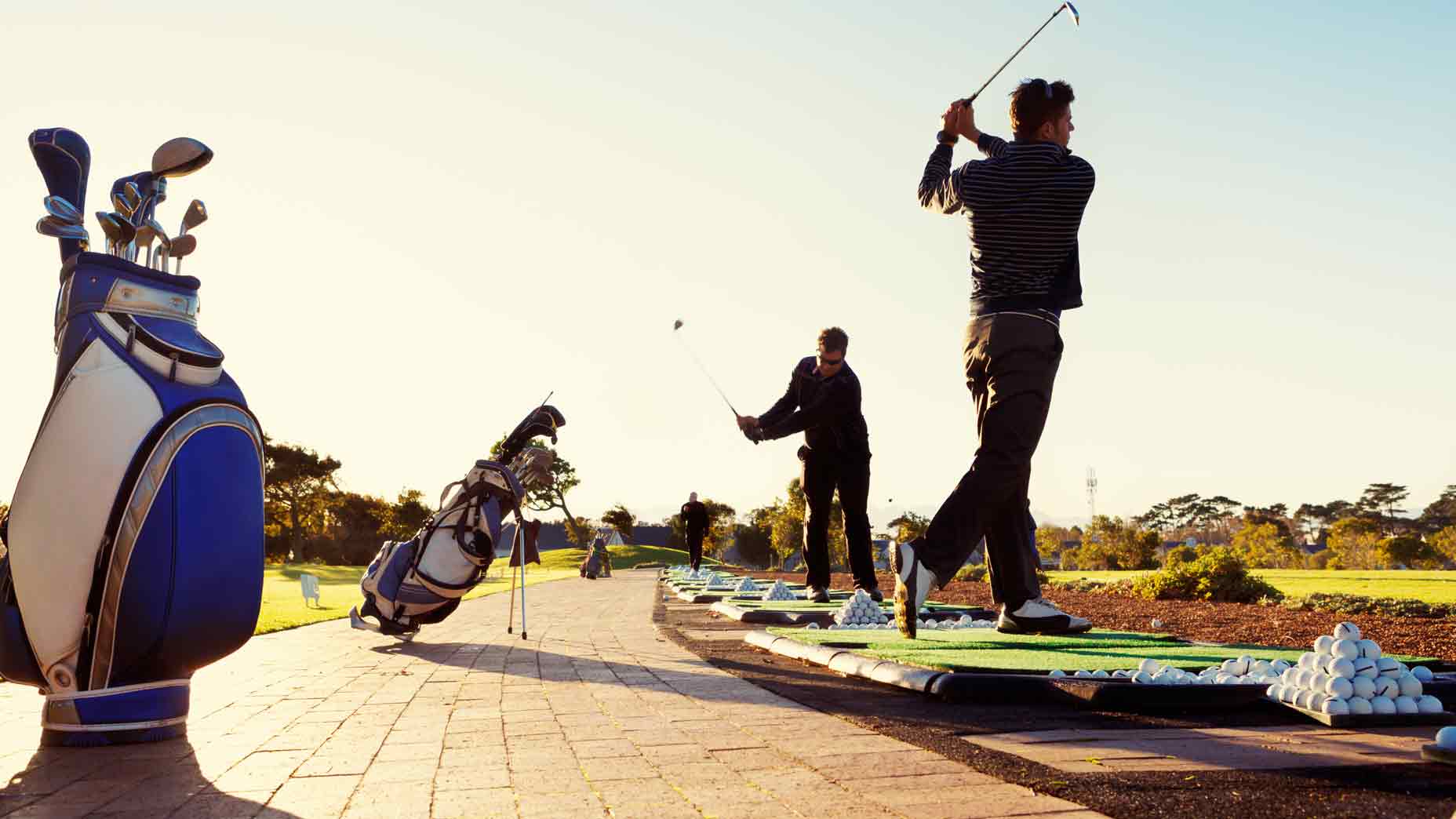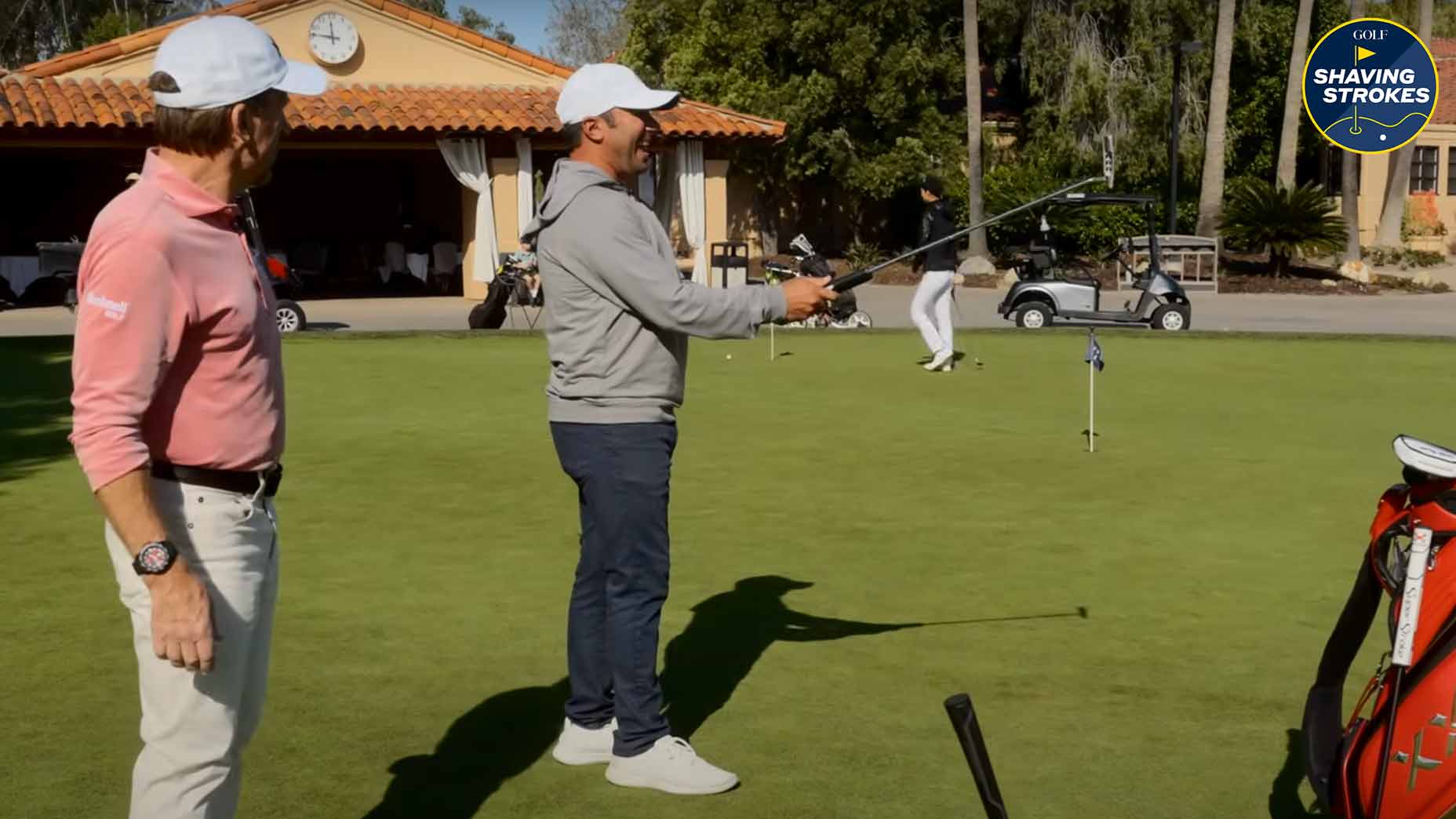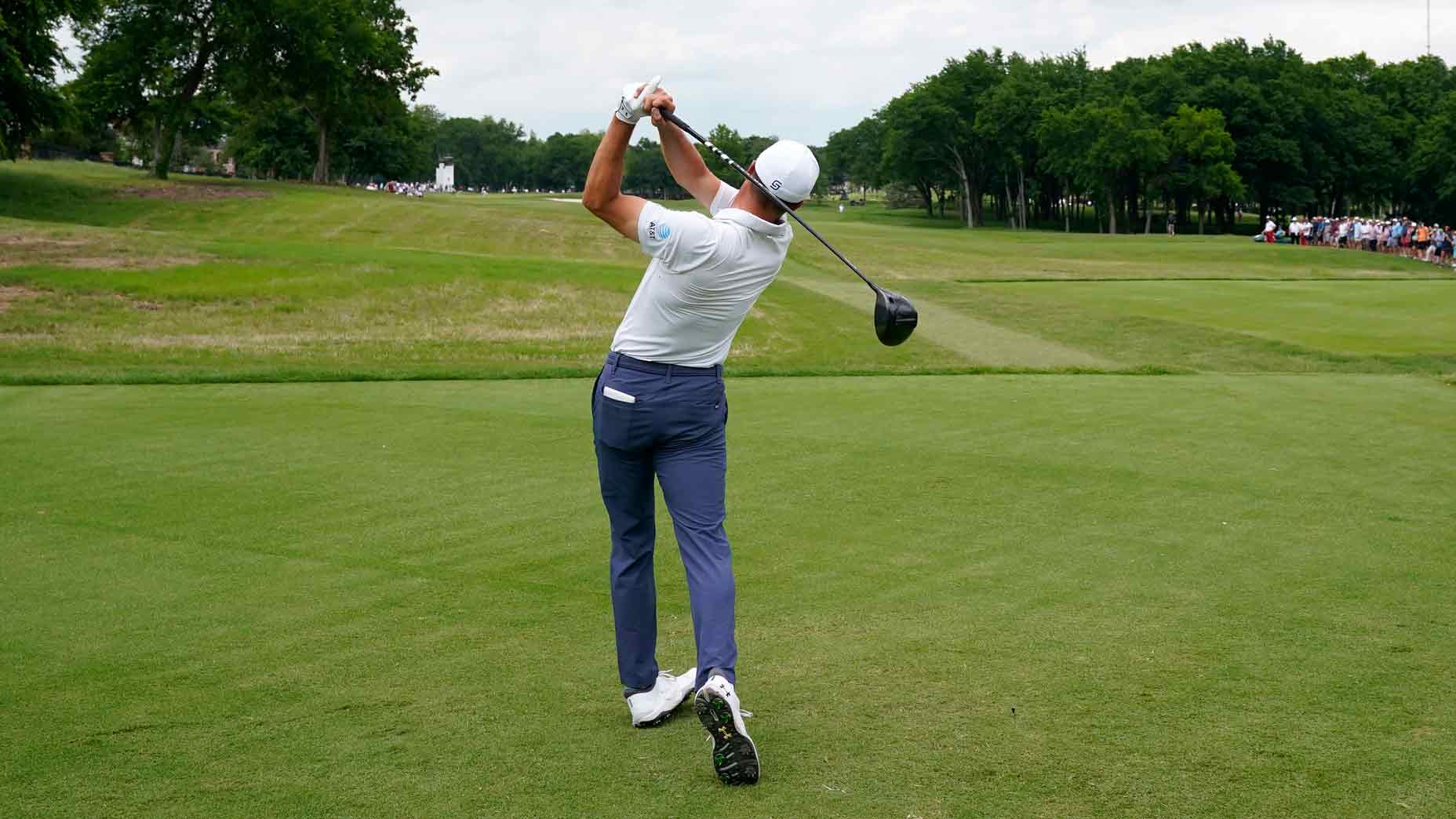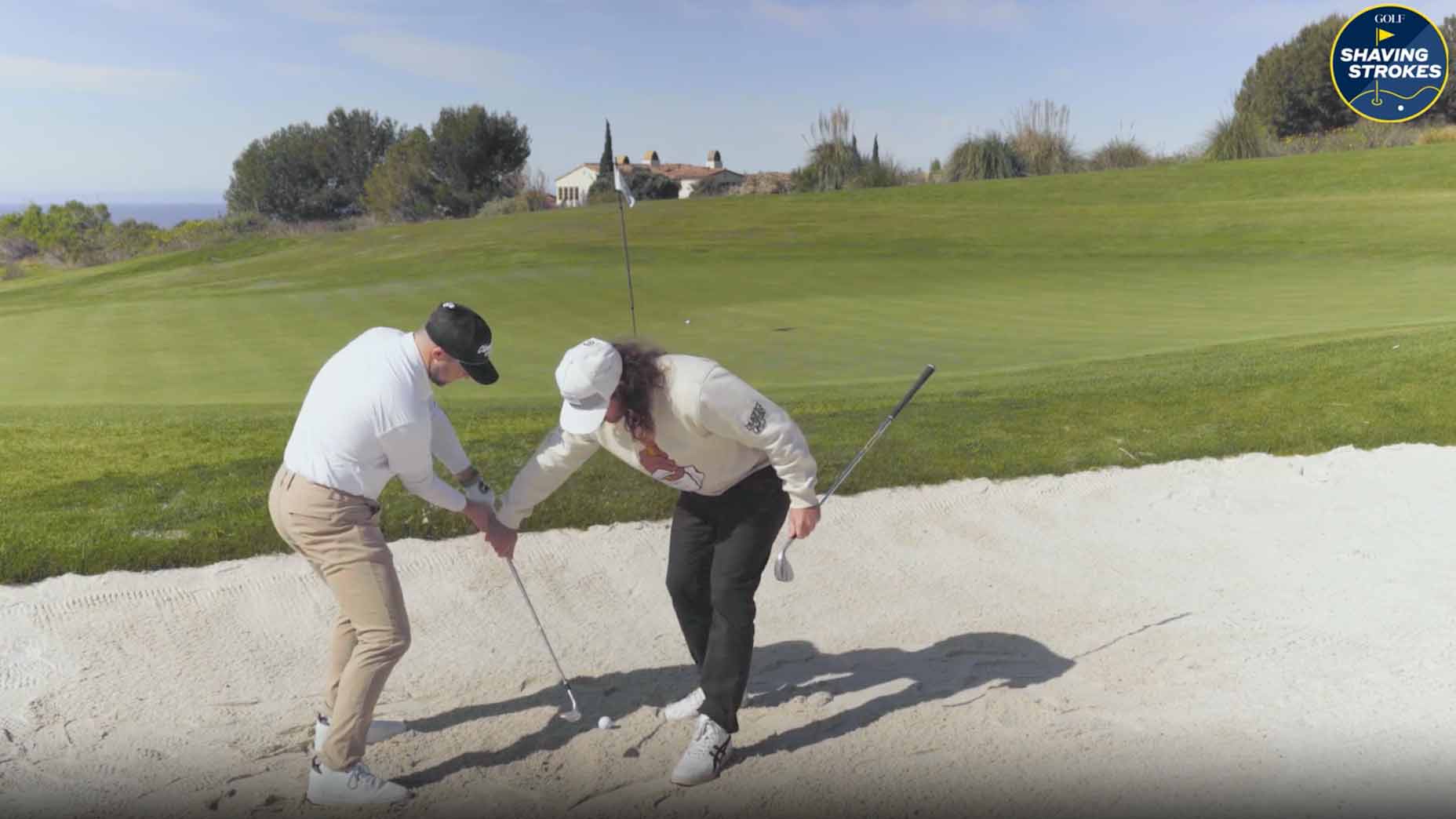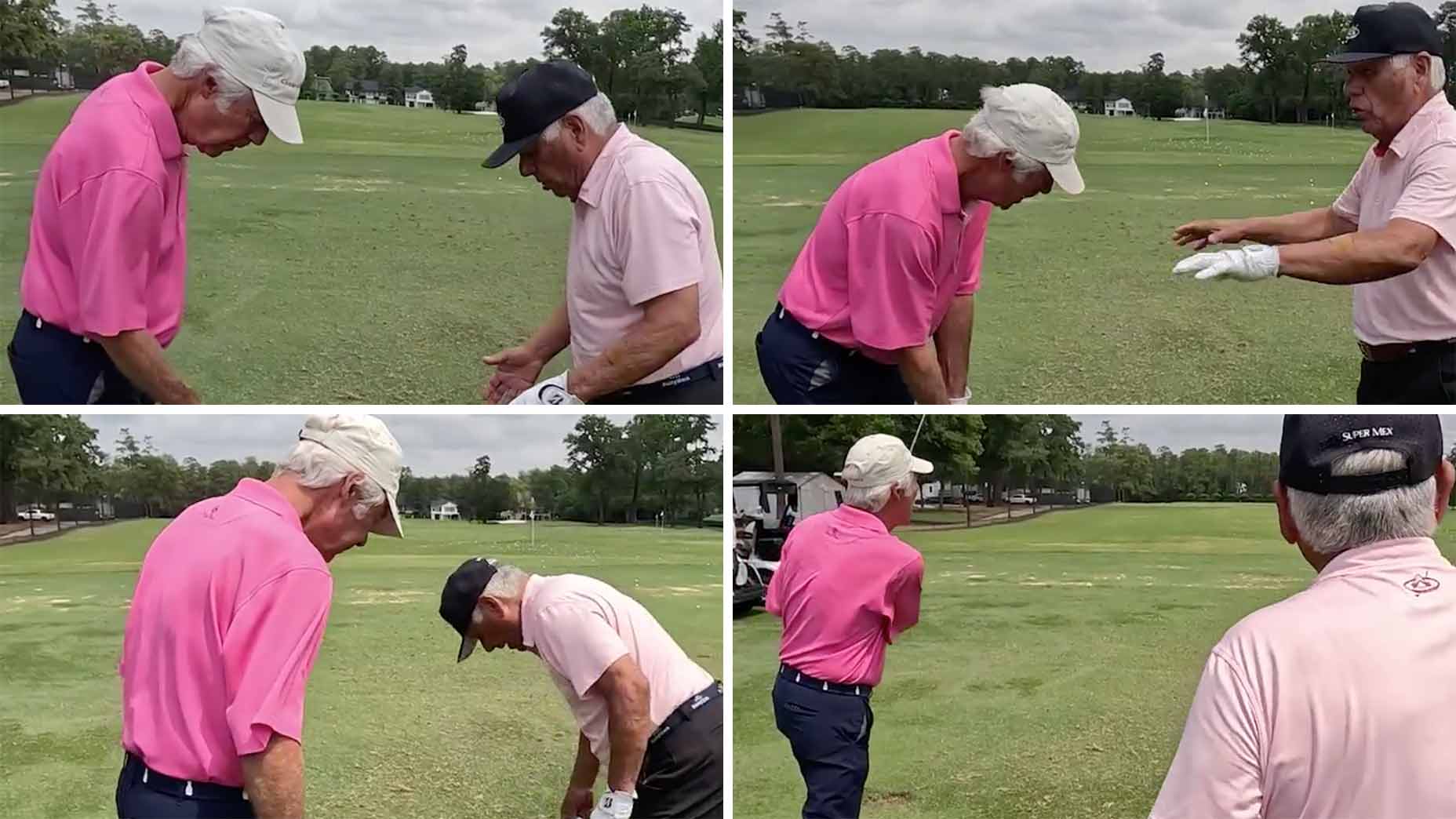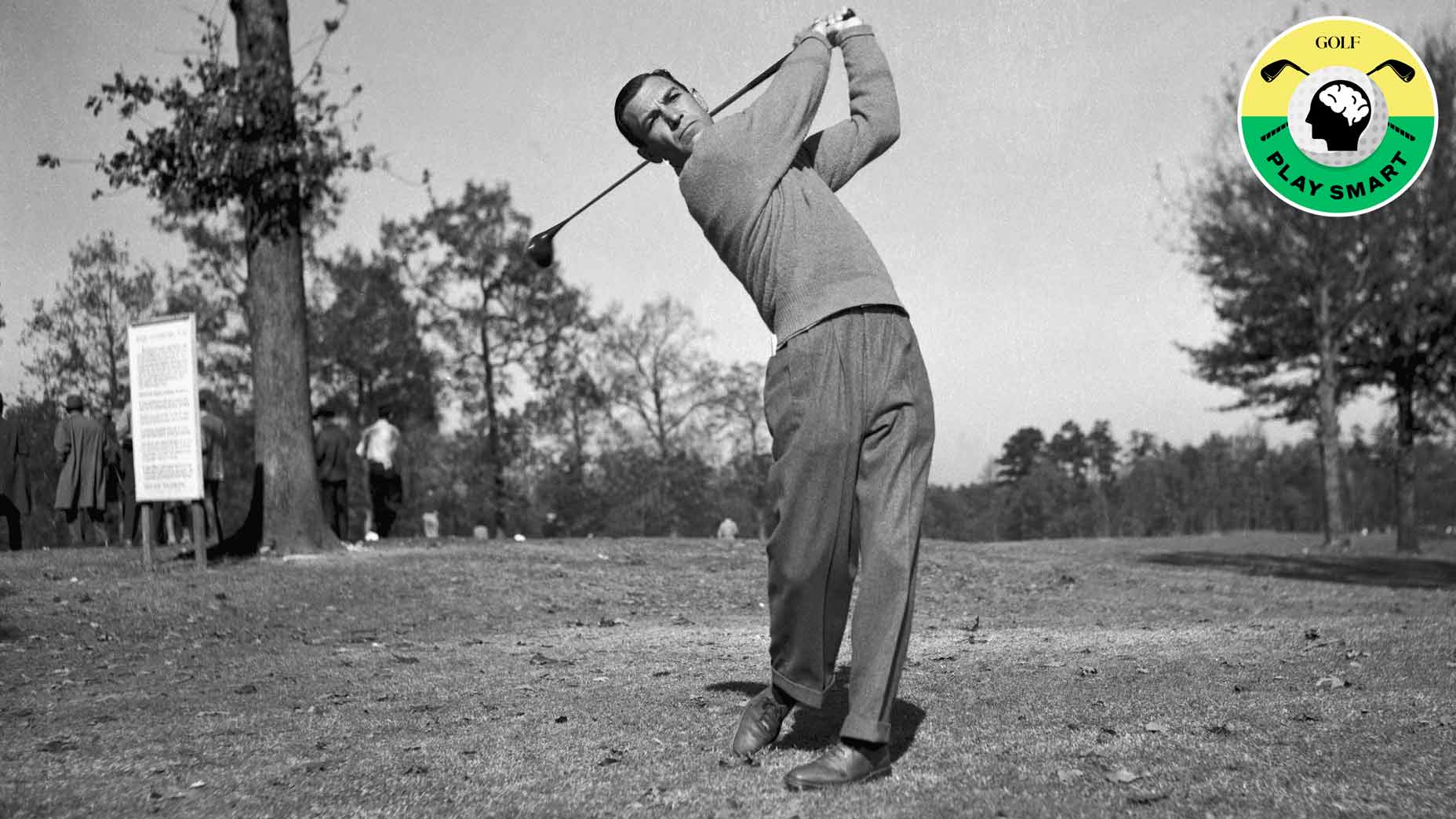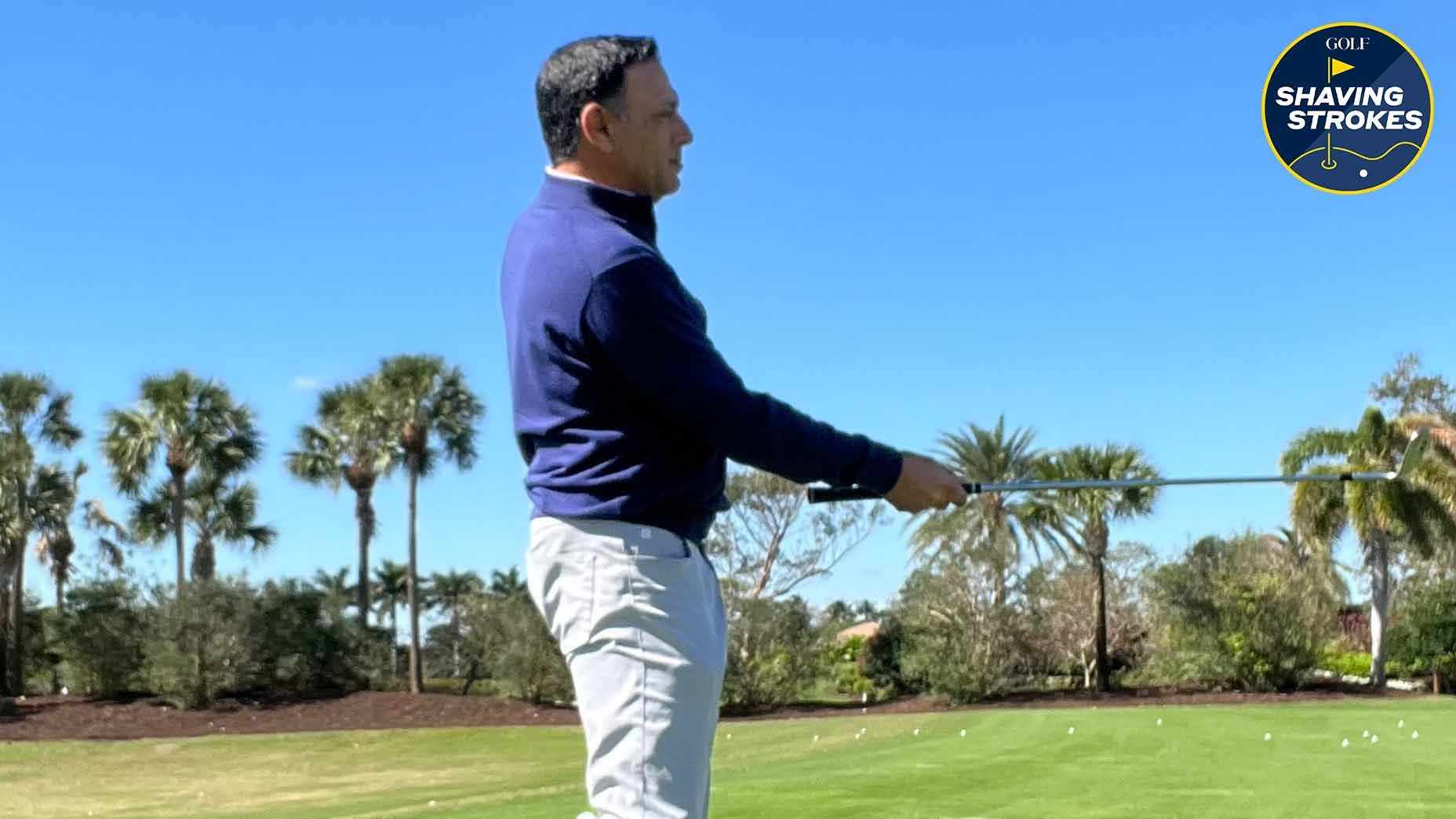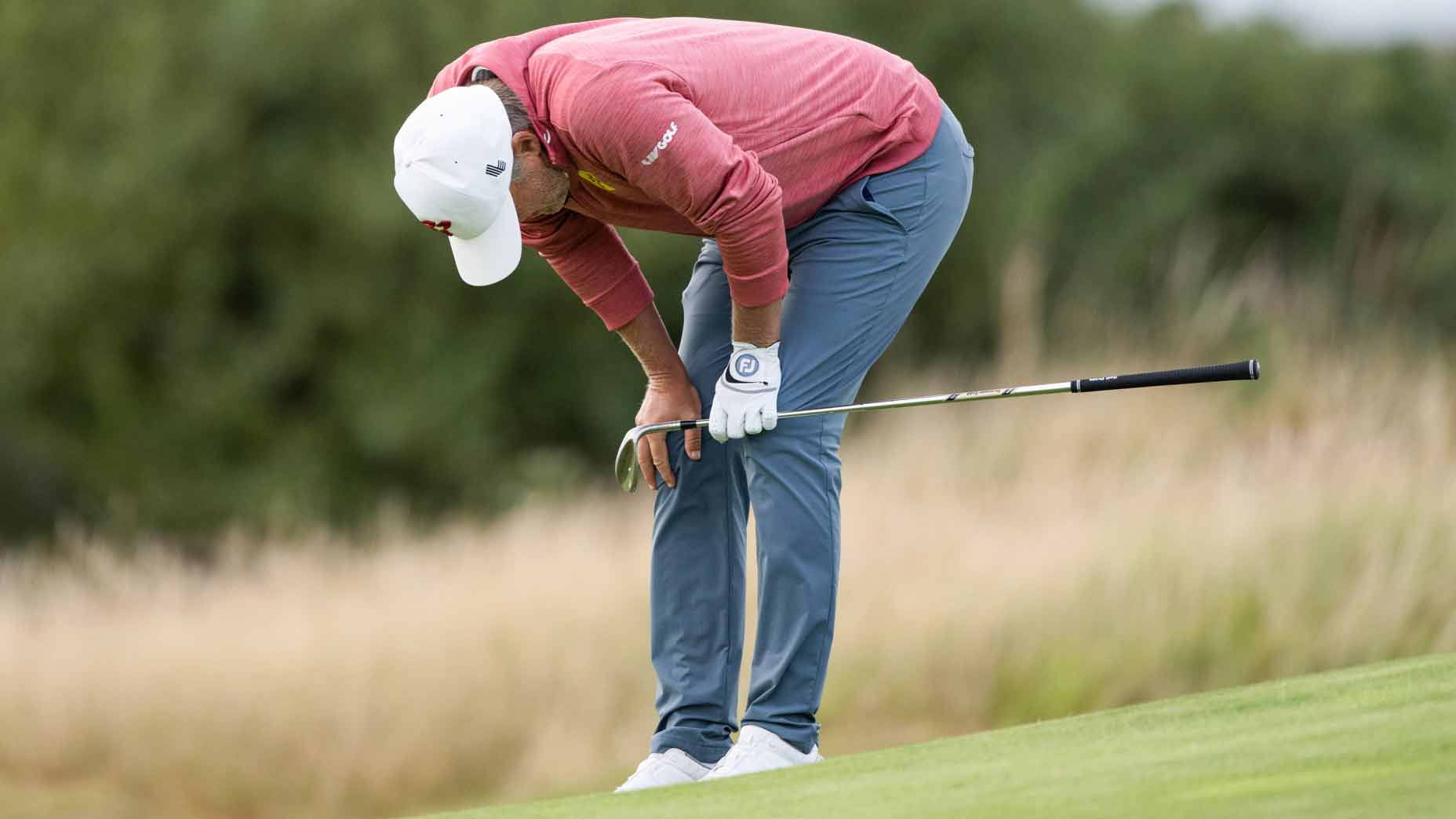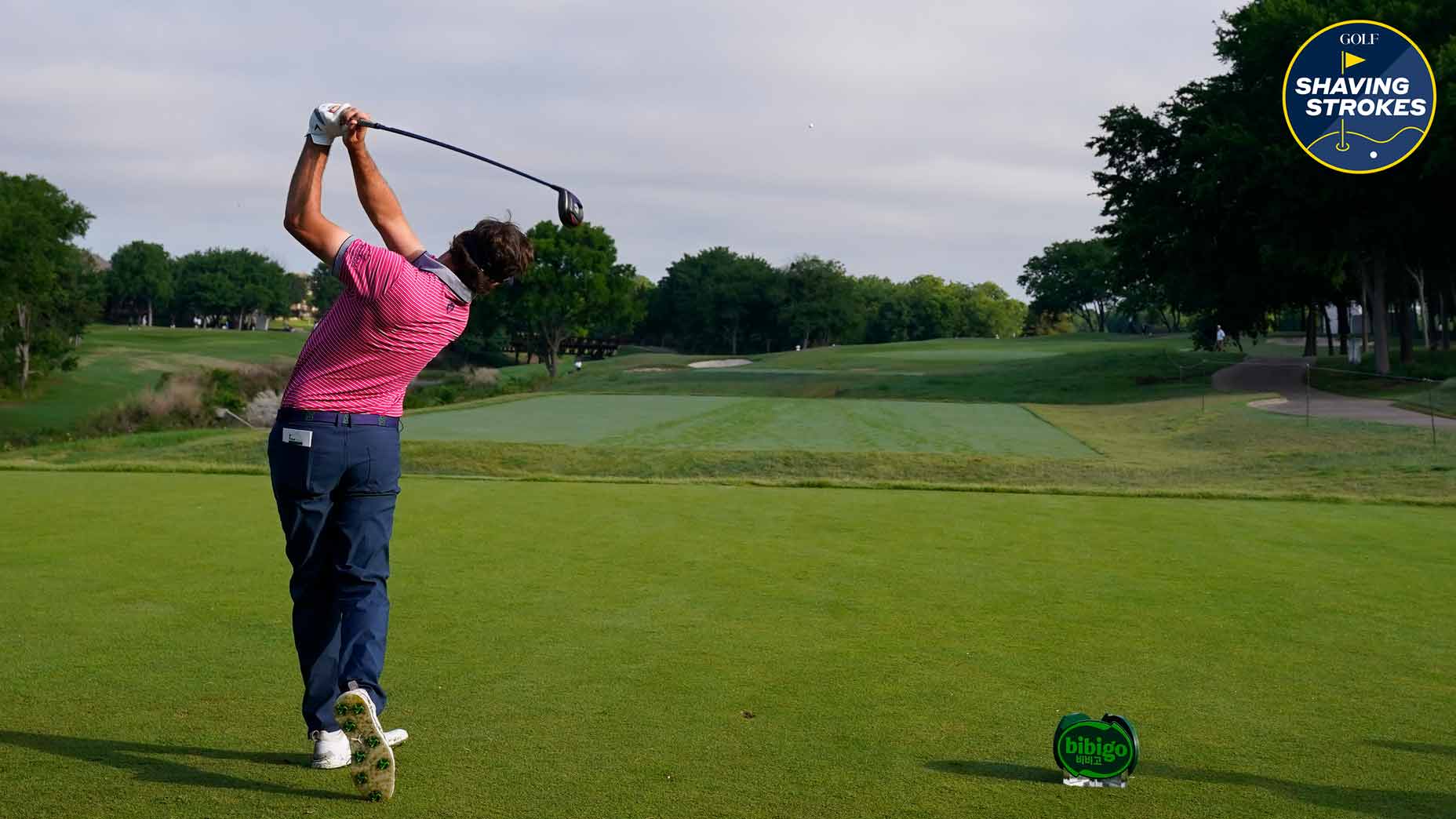‘Practice harder than you play,’ says Top 100 Teacher. Here’s why

By having purposeful golf practice, you'll be better prepared for anything the course throws at you.
Instagram/MartinChuckPGA
Every golfer has been in an uncomfortable position on the course before, causing their brain to overwork, their nerves to run rampant, and the internal pressure to be at its highest.
So why does this happen? Well, similar to a high school student who enters the classroom for a big test without studying, it’s because many amateurs aren’t properly preparing themselves during their golf practice.
Look, it’s impossible to mimic hitting from behind a 30-foot tree when on the range, but there are other ways that having a more focused golf practice routine can lead to calmer nerves during a round. You just need to create those scenarios for yourself before heading to the first tee box, which will allow you to stay cool under pressure for whatever comes your way on the course.
That’s why GOLF Top 100 Teacher Martin Chuck says amateurs must “purposely practice harder than you play.”
So what does Chuck mean by that? In the video below, he helps to demonstrate.
Despite having near-perfect grass around him to choose from, Chuck selected an area that was burnt out, even going so far as to placing his ball in a divot. The point of this is to help a player focus on precision, hitting a shot from an uncomfortable position.
Chuck then goes into how a player would want to attack this type of shot.
“This is a narrow stance, the ball is in the middle of that narrow stance, the handle of the club is slightly forward, and this is a 60-degree [wedge],” he says. “I’ve hit a few good ones, and have had a few mishits, so let’s see how I do with the camera on.
“[Remember to hit] ball first with a baby divot.”
After hitting his shot, he admits that he needed to use the bounce of the club a bit more. This could’ve helped him land the ball closer to the pin — with the result of his shot being about 10 feet.
Chuck then practices a shot that would elevate the ball a little bit more, which requires getting the club beneath it.
“So I would take a couple rehearsals, and, as you can see, I’m landing just behind the golf ball,” he says. “This is a bit of a righthand toss — just trying to get this club to skim underneath the ball with a little speed.
“It takes a lot of trust, and you’ve got to have an attitude that it’s OK to miss.”
In both examples, Chuck is mixing in different lies, which requires him to adapt his shot strategy. He must learn how to keep the ball low on the first lie, while trying to elevate it with the second lie.
By doing this, players will build muscle memory for themselves, getting a better understanding of which club to use for each situation. This type of focused golf practice will also help build confidence, allowing a player to feel less uncomfortable when they face a less-than-desirable situation on the course.
“So practice harder than you play,” Chuck adds. “When you get in these situations, you won’t feel sorry for yourself on the golf course, and you’ll [execute] fantastic.”

